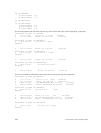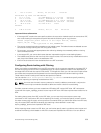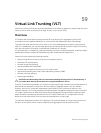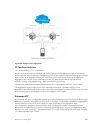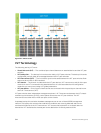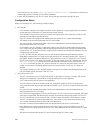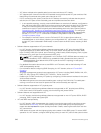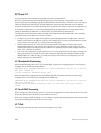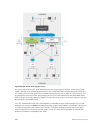
Configure Virtual Link Trunking
VLT requires that you enable the feature and then configure the same VLT domain, backup link, and VLT
interconnect on both peer switches.
Important Points to Remember
• VLT port channel interfaces must be switch ports.
• If you include RSTP on the system, configure it before VLT. Refer to Configure Rapid Spanning Tree.
• Dell Networking strongly recommends that the VLTi (VLT interconnect) be a static LAG and that you
disable LACP on the VLTi.
• Ensure that the spanning tree root bridge is at the Aggregation layer. If you enable RSTP on the VLT
device, refer to RSTP and VLT for guidelines to avoid traffic loss.
• If you reboot both VLT peers in BMP mode and the VLT LAGs are static, the DHCP server reply to the
DHCP discover offer may not be forwarded by the ToR to the correct node. To avoid this scenario,
configure the VLT LAGs to the ToR and the ToR port channel to the VLT peers with LACP. If supported
by the ToR, enable the lacp-ungroup feature on the ToR using the lacp ungroup member-
independent port-channel
command.
• If the lacp-ungroup feature is not supported on the ToR, reboot the VLT peers one at a time. After
rebooting, verify that VLTi (ICL) is active before attempting DHCP connectivity.
• When you enable IGMP snooping on the VLT peers, ensure the value of the delay-restore
command is not less than the query interval.
• When you enable Layer 3 routing protocols on VLT peers, make sure the delay-restore timer is set to a
value that allows sufficient time for all routes to establish adjacency and exchange all the L3 routes
between the VLT peers before you enable the VLT ports.
• Only use the lacp ungroup member-independent command if the system connects to nodes
using bare metal provisioning (BMP) to upgrade or boot from the network.
• Ensure that you configure all port channels where LACP ungroup is applicable as hybrid ports and as
untagged members of a VLAN. BMP uses untagged dynamic host configuration protocol (DHCP)
packets to communicate with the DHCP server.
• If the DHCP server is located on the ToR and the VLTi (ICL) is down due to a failed link when a VLT
node is rebooted in BMP mode, it is not able to reach the DHCP server, resulting in BMP failure.
• If the source is connected to an orphan (non-spanned, non-VLT) port in a VLT peer, the receiver is
connected to a VLT (spanned) port-channel, and the VLT port-channel link between the VLT peer
connected to the source and TOR is down, traffic is duplicated due to route inconsistency between
peers. To avoid this scenario, Dell Networking recommends configuring both the source and the
receiver on a spanned VLT VLAN.
• After you enter the clear arp command on a Z9500 configured as the primary VLT peer switch, an
ARP request destined for the secondary VLT peer that arrives from a host and is tunneled through the
primary peer updates the ARP entry in the Route Processor (RP) on the primary peer. However, the
same ARP request packet is dropped on the Control Processor (CP) because it is not destined to the
primary peer and the CP has no corresponding ARP entry that can be refreshed with this packet. As a
result, there is an ARP entry mismatch in the RP and CP tables. There is no impact on switch behavior.
• Bulk synchronization happens only for global IPv6 Neighbors; link-local neighbor entries are not
synced.
• If all of the following conditions are true, MAC addresses may not be synced correctly:
– VLT peers use VLT interconnect (VLTi)
– Sticky MAC is enabled on an orphan port in the primary or secondary peer
– MACs are currently inactive
Virtual Link Trunking (VLT)
945




